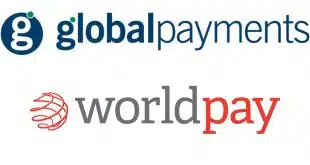Announcements last week from two of the major online payment systems, PayPal Inc. and Google Inc.'s Google Checkout, show the two are taking differing roads: PayPal is getting ready for a big growth spurt, while Google Checkout is changing its longstanding pricing plan with tiered rates that amount to price increases for all but the highest-volume merchants. Some analysts now wonder how long Google will stay in the payments game. Google Checkout's current standard pricing is 2.2% plus 20 cents. On May 5, a new system based on monthly Checkout sales takes effect for private-sector merchants. Merchants submitting $3,000 or less per month in Checkout transactions will pay 2.9% plus 30 cents. The other rates are: $3,000 to $9,999.99, 2.5% plus 30 cents; $10,000 to $99,999.99, $2.2% plus 30 cents; and $100,000-plus, 1.9% plus 30 cents. Checkout's new rates match the per-transaction rates for some of PayPal's major products but effectively amount to a price increase for all but the highest-volume merchants. Google also will discontinue the offer under which merchants could get $10 worth of free processing for every $1 they spent on search-engine leader Google's keyword-based advertising service called AdWords. A spokesperson for Mountain View, Calif.-based Google says by e-mail that, “this decision reflects what we believe is the natural next step for Google Checkout, as we move from our standard pricing to a more mature pricing model. Our new, tiered-pricing structure aligns incentives so that merchants get more benefit as more buyers use Checkout on their sites. Merchants will also continue to benefit from the increased sales that Checkout delivers by driving more traffic and generating higher conversions.” Google refuses to disclose the number of merchants accepting Checkout or its volume. The spokesperson referred to “millions of buyers” worldwide and “hundreds of thousands of sellers” in the U.S. and United Kingdom. Bruce Cundiff, senior analyst at Pleasanton, Calif.-based Javelin Strategy and Research, sees the changes as the possible “first step in a phase out” of Google Checkout, which will be 3 years old in June. “It seems the product hasn't lived up to expectations,” he says. “They're basically making it like any other payment mechanism.” In a statement on Google Checkout's blog, however, product marketing manager Anita Barci said Google “is committed to the continued growth and development of Checkout and to helping merchants increase sales by driving more leads and higher conversions.” Her posting ended with an appeal to “stay tuned for more announcements about product enhancements coming soon.” PayPal, meanwhile, already is the leader among the online payment alternatives. But parent company eBay Inc. has even bigger things in store for PayPal while it also attempts to reinvigorate eBay's slow-growing auction business. In a presentation last week for analysts who follow the company, eBay said it expects PayPal will become a second “core” that's bigger than eBay Marketplace, the company name for its online-auctions and fixed-price trading businesses. PayPal payment volume was $60 billion in 2008; company projections call for $100 billion to $120 billion in 2011. In line with that, PayPal revenues should grow from $2.4 billion last year to $4 billion to $5 billion in 2011. PayPal said in the analyst presentation that it expects the growth to come from eBay transactions as well as from off-eBay merchants, and also new areas such as mobile and non-retail payments from social networks, government, non-profits, banks, and businesses with specialized payment needs. Company revenue projections call for compound annual growth rates for 2009-2011 in the low single digits for PayPal's on-eBay business, in the 30% range for merchant services, and in the 40% range for Bill Me Later and so-called “adjacent payments.” EBay bought online transactional credit provider Bill Me Later Inc. last year and placed it under PayPal's umbrella (Digital Transactions News, Oct. 6, 2008). “Today, PayPal has more than 70 million active accounts and represents 9% of e-commerce globally,” PayPal president Scott Thompson said in a blog posting about the new plans. “And the best thing is that we are just at the beginning.” PayPal, however, is going to have to get more business out of its current customers rather than rely so heavily on new accounts for growth as it has in the past, according to Cundiff. “The growth is certainly going to be dependent on expanding the breadth and deepening the relationships with existing PayPal account holders,” he says. He adds that while e-commerce is holding up better than in-store retailing, asking consumers to spend more in the recession could be a tough job for PayPal and anyone else looking to grow retail transaction volumes.
Check Also
Better Defenses Make It Harder to Perpetrate Fraud, a Report Finds
Ransomware demands and payments declined in 2024, thanks to a combination of better law enforcement …





